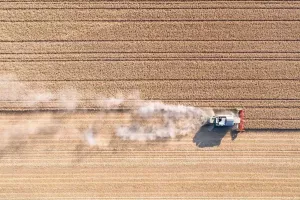Lavenders
Lavenders are native to the Mediterranean coast, but there are also reports that lavenders were originally born in Persia (now Iran) and Canary Islands and were introduced to France on the Mediterranean coast through Phoenicians. Lavenders bloom in summer and autumn. The flower colors vary from variety to variety, including blue, light purple, purple, dark purple and white. Blue is the most common one.
Lavenders don’t need too much water. The suitable annual rainfall for them is about 600-800mm. In the turning green stage and budding stage, the plants grow faster and need more water; The water demand is less at flowering stage; The amount of water should be appropriate during fruit setting; Winter irrigation or snow cover shall be carried out during winter dormancy. Therefore, the ideal rainfall distribution in a year is abundant in spring, moderate in summer and sufficient snow in winter.
Lavenders are plants that like long sunshine. Sufficient sunshine is required during the growth and development period, and the sunshine hours throughout the year are required to be more than 2000 hours. Plants grow slowly or senescence rapidly and develop poorly in cloudy and humid environment. Lavenders have well-developed roots and like fertile soil with deep, loose, and good air permeability and rich in silicon and calcium. Plots with strong acid or alkaline soil, heavy viscosity, poor drainage, and high groundwater level are not suitable for planting.
The whole plant of lavender has a strong fragrance and can be used for many purposes. The flowers and leaves can extract essential oil, which has the effect of relieving headache and refreshing breath; The fragrance is refreshing and pleasant. It has the effect of calming the mind and treating sleep. Lavenders have been used to produce essential oil products, sachets, pillows and other daily necessities and health products, ranking among the top ten essential oils in the world, which has broad application prospects and development space.
In European tradition, lavenders seem to be naturally related to love. A large number of love legends or folk customs involve lavender. LAVENDER REPRESENTS TRUE LOVE was the most representative lyric poem in the Elizabethan era. Lavenders represent "waiting for love". They imply an implicit expression of love and a firm commitment. Lavenders are regarded as one of the important tools to get rid of unclean things and incense.


